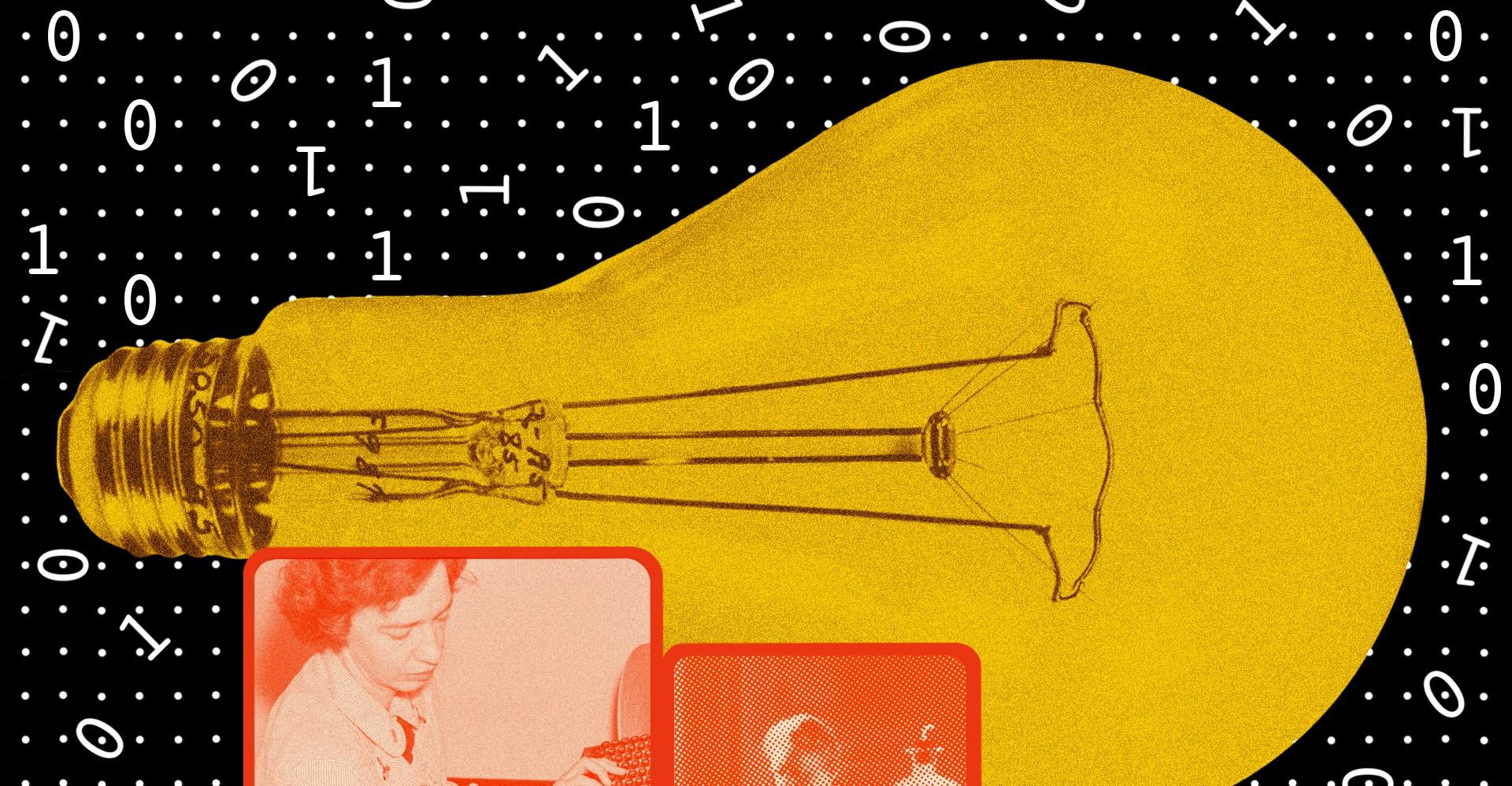Art is for everyone. Here’s how to approach your next trip to a gallery or museum.


“If you tried to reimagine your life without art ... it would look radically different,” says Karen K. Ho, a writer for ARTNews. “Art intersects with more things than people think.” It’s not just the van Goghs and Monets that hang on museum walls. It’s in works like Anish Kapoor’s innovative Cloud Gate (a.k.a. “The Bean”) in Chicago’s Millennium Park, or the spiral architecture of the Guggenheim building in New York. It’s the murals along the bike path or on the side of the school. Art adorns movie posters and storefront signage. Artists influence the clothes you wear, the music you listen to, the products you consume. Simply put, art is everywhere.
If art’s such a central tenet of our culture, though, why do so many of us feel like we just don’t get it?
In a YouGov survey released in 2023, nearly half of Americans said they didn’t consider themselves artistic. At 58 percent, even more respondents said they weren’t familiar with famous artistic movements or styles. For most of my life, that was me. I didn’t grow up surrounded by paintings or pottery. My elementary school art “classroom” was a windowless utility closet between the boiler and the gym that smelled like dirty socks and doubled as a tornado shelter; we met there every other day to scratch stars into linoleum and glue strips of newspaper together in an attempt at making sculptures out of papier-mâché. That limited education didn’t teach me much about art, or how to understand it.
So when I arrived at the brutalist Kahler building housing Milwaukee’s lakefront art museum for the first time at 20, I had no idea what I was even looking at. I wanted to be a person who appreciated art, but to become an aficionado, I realized, I had to build a relationship with art. I not only had to take it in regularly — akin to something the writer Julia Cameron calls “artists’ dates” in her book on creativity, The Artist’s Way — but I would also need to sit with it when I did.
As I began to build an art habit, visiting museums and galleries and fairs with regularity, I felt a lot like the child in the old Lynda Barry cartoon that’s been making its way around Instagram again. In the four-panel line drawing, a mother and child are standing in front of a framed sketch of another mother with a child on her lap. The childish viewer asks: “What’s sposta happen?”
Look at art as an interactive adventure
For a long time, I shared that sentiment, asking, “What does this even mean?” Using audio guides or listening to artists’ talks sometimes helped clarify a work’s history but it didn’t always help me connect with the art. It wasn’t until I landed in front of a Monet at Zurich’s Kunsthaus that I understood that deciphering the meaning of a work demands looking past its physicality. Looking at a painting of a Parisian pond with water lilies is only the first step to engaging with it. The strong response I had to the turn-of-the-century waterscape arose not because of its artistic qualities, but as a result of a memory it triggered — that of an art teacher who regularly insulted her students with the suggestion we would never understand the beauty of Monet.
Connecting a work of art to other cultural artifacts while also relaying my own life experiences onto it follows the Surrealist belief that meaning is derived from the triangulation of the work itself, the artist’s intention, and the viewer’s response to it. Art’s meaning stems from the interaction between the viewer and the artist; what the viewer brings to the piece is important regardless of the artist’s intent. From that perspective, “getting” art should feel less intimidating, as there are no right or wrong ways of reading a piece — only ideas that can be expanded or guided by the artist.
“I don’t need the viewer of my paintings to know exactly what I meant, but I would like to have a handshake,” Molly Ovenden, an artist, poet, and creative coach in Duluth, Minnesota, said in an interview. “It’s more about an openness to a conversation ... or an invitation to an experience.”
In that regard, considering your visit to a museum or gallery as an active, not passive, undertaking might help to solidify a relationship to art. Even in the days before mobile phones became such a central part of our lives, most of us were sparing just a short amount of time to engage with individual works. A 20-year-old study reaffirmed in 2017 revealed that on average, we only look at a work of art in a museum, including its title and accompanying information, for around 27 seconds.
“There’s an effort to create work that you don’t have to spend a lot of time thinking about,” the multidisciplinary artist Gregg Deal told me. Yet he believes that critical thinking is vital to any art, on the part of both the artist and the viewer.
“In school, we learn how to interact with poetry or art in a similar way that we learn to dissect frogs. We identify all of the pieces and we take them apart,” Ovenden says. In her work as a coach, she tries to get people to consider what comes after that dissection. “We don’t learn what we do once it’s all pulled apart. We kind of just move on.” It’s in the process of putting the world back together that Ovenden believes the relationship between a viewer and a work is formed.
Be open to sitting with discomfort
If art is a process of imagination that makes “reality conceivable, memorable, sometimes even predictable,” as culture philosopher Susanne K. Langer writes, such engagement can go even further, as it gives rise to feelings we aren’t in touch with every day, like disgust and awe. In viewing Deal’s works, I experienced that firsthand. Several of his pieces inspire humor as they remix Western cowboy tropes, while others depicting the Indigenous experience give rise to feelings of shame because the humanity portrayed reveals a disturbing truth about American conquest.
“I’m not trying to make work and think that people are going to like it,” Deal told me, noting that his role as an artist is to convey his ideas with honesty. And truthful art can make people wildly uncomfortable. “But that discomfort is such an important part of the work,” Deal says.
In this case, part of not getting the art could stem from a reluctance to confront that discomfort. As Langer writes, teaching art is an education in feeling; when art gives rise to emotions that we do not always have access to, it can feel too tough to manage. Yet it is in grappling with those emotions that the connection to art — and, ultimately, understanding it — is forged.
“How do you teach a willingness to be uncomfortable?” asks Ovenden. Even as an avid lover of art, she finds the emotional response doesn’t always come easy. “It can be really overwhelming.”
Perhaps that overwhelm is a positive sign, as it reveals an authenticity that we don’t confront in much of our daily lives.
Keep an eye out for glimmers of your own experience
In an interview with the Paris Review, the cartoonist Barry said that she saw the way we relate to art as proof of catharsis. “That’s what the arts do. In the course of human life we have a million phantom-limb pains — losing a parent when you’re little, being in a war, even something as dumb as having a mean teacher — and seeing it somehow reflected, whether it’s in our own work or listening to a song, is a way to deal with it.”
That relatability could also serve to explain why Barry’s cartoon has remained so popular after being in circulation for years: it depicts the process of revelation the art onlooker experiences. After the mother lifts her child up to view the artwork more closely, they cuddle in a move that mirrors the model in the painting. Mom sees herself reflected in the painting and — epiphany! It’s a meta response to seeing ourselves in a cartoon depicting us seeing ourselves.
Or, as Karen K. Ho told me, if you start to think about the arts as a way of transforming time or transforming your experience — if you move beyond the surface response of “this is a nice picture” or “this is a picture that sucks” — then looking at art can be a really interesting endeavor. She refers to the Vermeer exhibition at Amsterdam’s Rijksmuseum in 2023, a show that sold out almost immediately and drew visitors from around the world. While you might believe that your life bears little relevance to that of 17th-century Dutch aristocrats, she says that in portraying the beauty of everyday moments, Vermeer inspires you to look at your life anew. “Hopefully when you think about doing those things, you understand there can be beauty in that moment, too.”

How do you know if you’re wasting your life?
- 5 hours ago
NHL board of governors eager to see more 'color vs. color' jersey matchups
- 19 hours ago
Australian PM declares Sydney shooting a ‘terrorist’ attack targeting Jews
- 13 hours ago
Source: Gray, Nats reach deal to avoid arbitration
- 19 hours ago
Bondi Beach shooting: Australia hails ‘hero’ Ahmed who stopped gunman
- 13 hours ago
Security forces kill 13 Khwarij in two separate engagements in KP: ISPR
- 14 hours ago
Jays president Shapiro given new 5-year deal
- 19 hours ago

Pakistan condemns attack on UNISFA in Kadugli, Sudan
- 13 hours ago
Pakistan aims to become model in digital assets regulation: Bilal saqib
- 13 hours ago
Under-19 Asia Cup: India beat Pakistan by 90 runs
- 13 hours ago
Sources: Rangers address needs with 3 signings
- 19 hours ago
Diaz picked Dodgers because 'I'm looking to win'
- 19 hours ago








